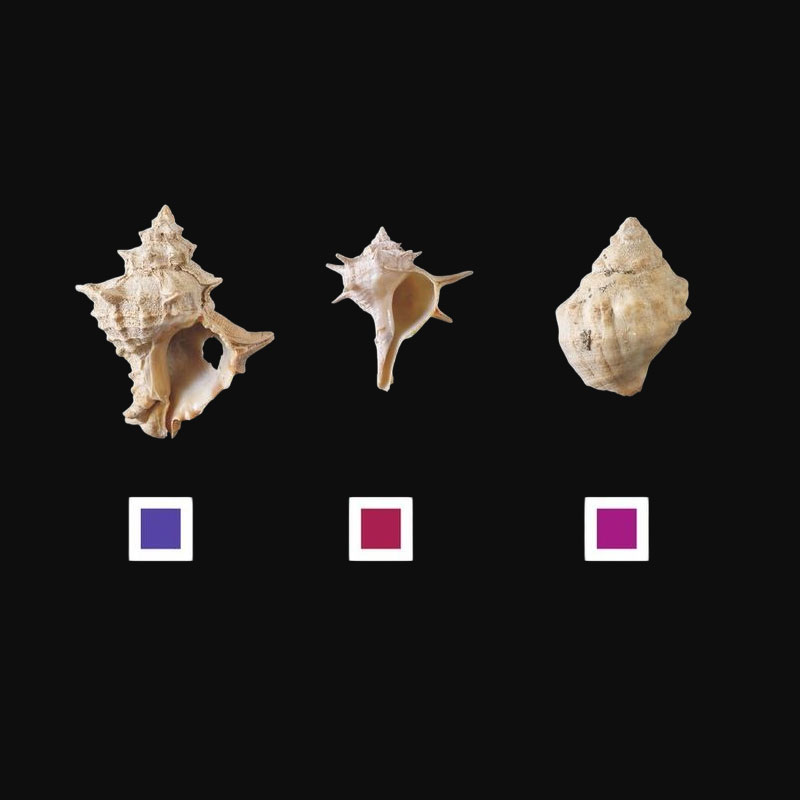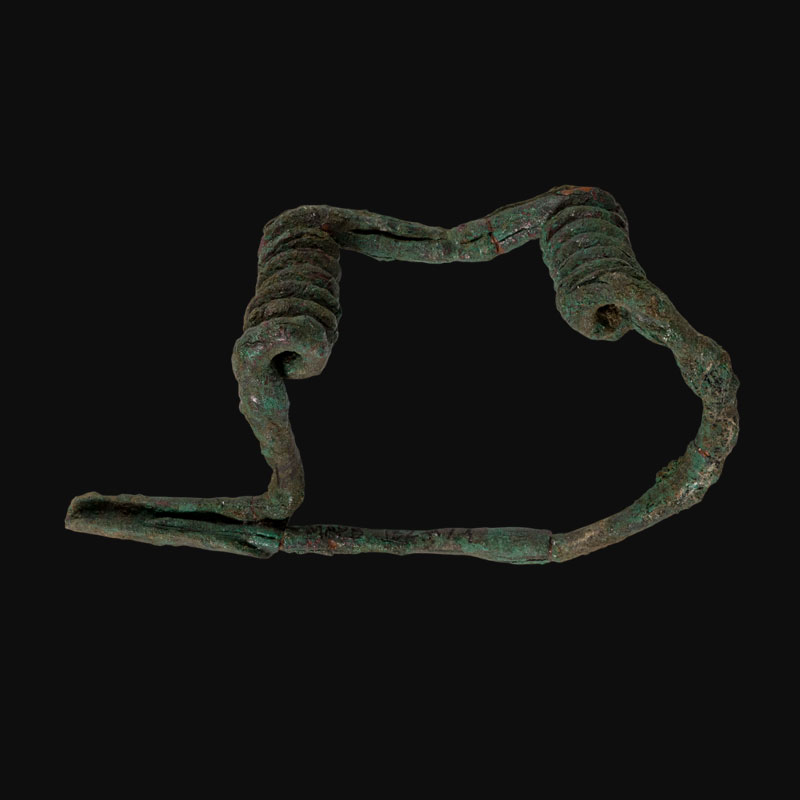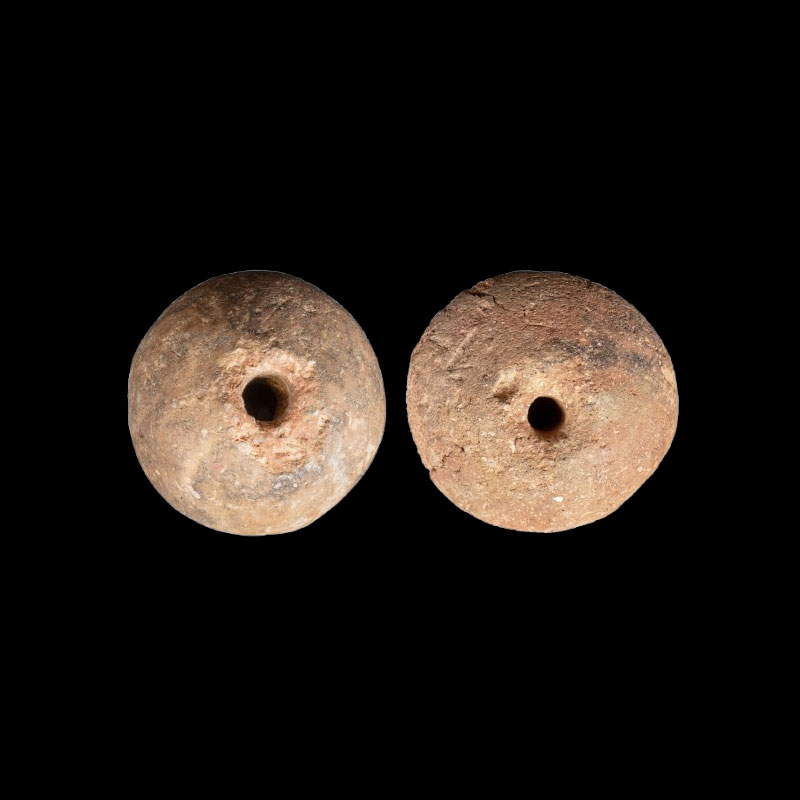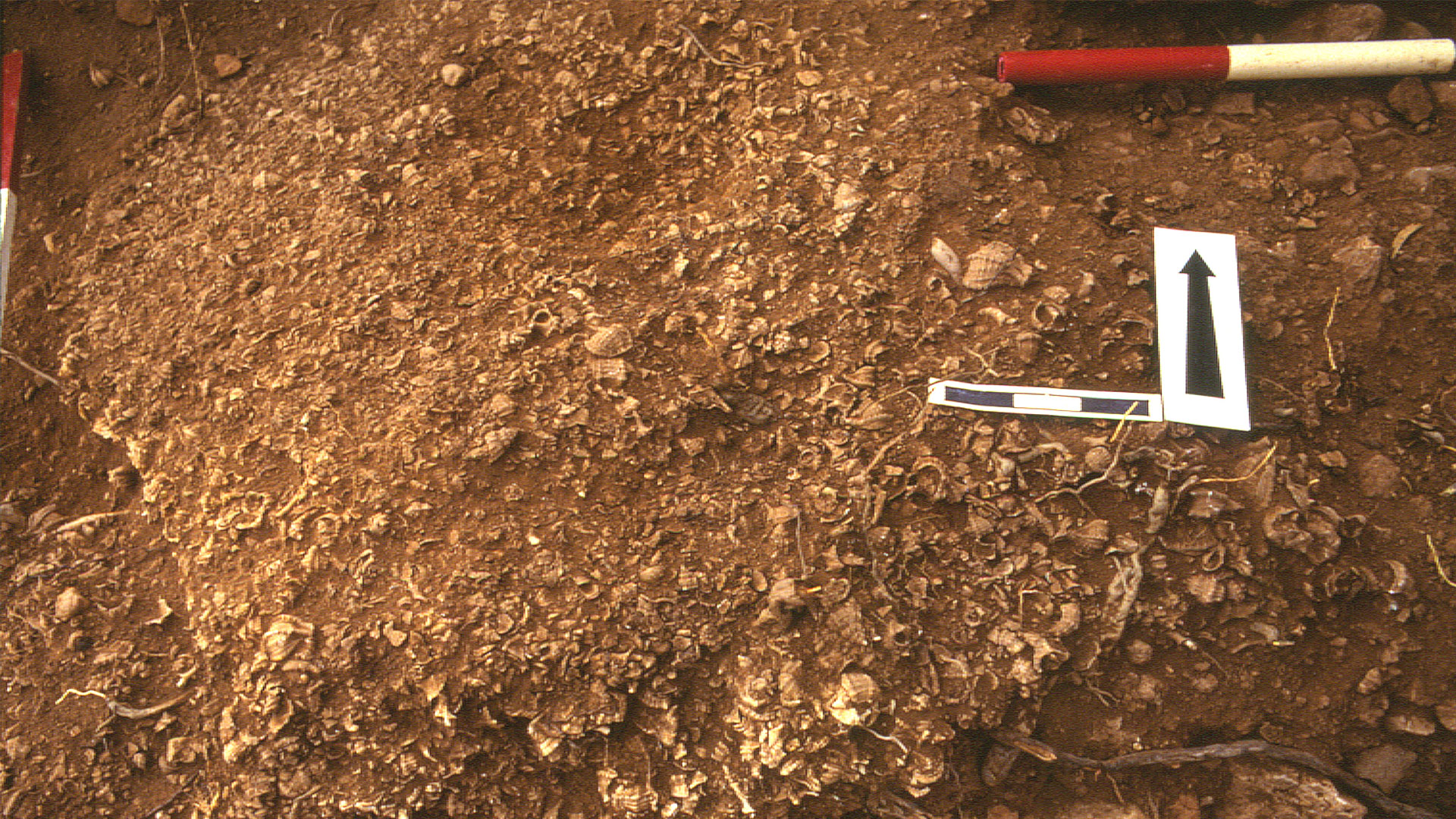MUREX
DOUBLE-SPRING BRACKET
MUREX SHELL
Murex brandaris. ARPA Patrimonio
Terracotta spindle whorls
THE MEN IN PURPLE
In ancient times, the Phoenician people were known for their ability to dye fabric a bright purple colour. This reddish tone was obtained from molluscs from the Mediterranean Sea, and that is why the Greeks called these settlers “phoinikes”, which means “red purple”.
A VERY UNPLEASANT LUXURY
Obtaining purple dye involved carnivorous snails, murex trunculus and murex brandalis, whose glands were extracted to obtain the pigment. This process, involved the decomposition of the molluscs mucosa boiled in seawater, generating a nauseating smell. To obtain just 1.4 grams of ink, 12,000 murex were needed, making purple-dyed fabrics more valuable than gold.
From
Sa Caleta over the purple
“phoinikes”
From Sa Caleta over the purple
“phoinikes”
THE PRESTIGE OF A COLOR
Although the Phoenicians already commercialised with olive oil, perfumes and ceramics, dyed fabrics boosted their economy. Production, centred in Tyre but extended to colonies such as Beirut and Sarepta, raised the prestige of the colour purple. The high demand led to the creation of facilities specialized in capturing murex in colonies such as Almuñécar (Granada) and Morro de la Mezquitilla (Málaga).
THE SA CALETA WORKSHOP
In Sa Caleta no archaeological remains have been found that indicate a large-scale activity for the production of purple. However, numerous murex remains have been discovered, suggesting the possibility that small-scale activities were carried out to obtain this valuable product. The first signs of specialized facilities date back to the late Punic era.
In Sa Caleta, several spindle whorls have been found, small pieces used as counterweights in looms, which show signs of weaving in the colony.
Murex shell midden found during the excavations at Sa Caleta. ARPA Patrimonio.






